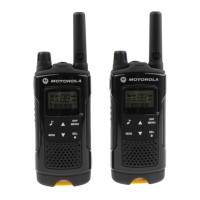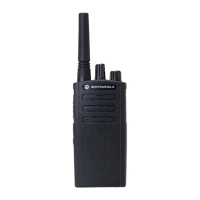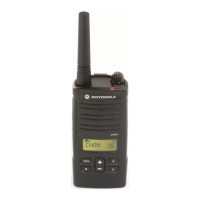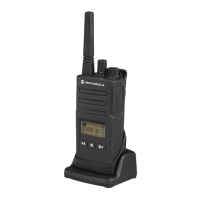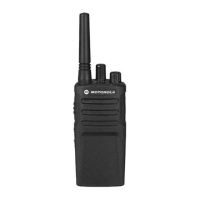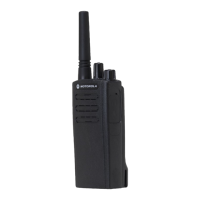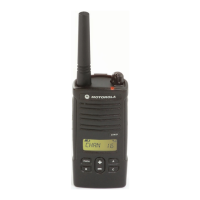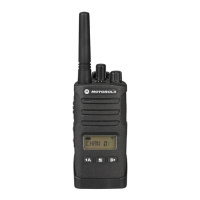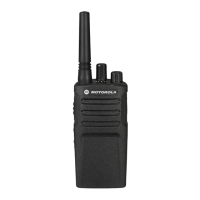What to do if my Motorola XT660d has no power?
- MMichele WhiteAug 15, 2025
Extreme operating temperatures can affect the battery life of your Motorola Two-Way Radio. Try recharging or replacing the Li-Ion battery.
What to do if my Motorola XT660d has no power?
Extreme operating temperatures can affect the battery life of your Motorola Two-Way Radio. Try recharging or replacing the Li-Ion battery.
What to do if my Motorola Two-Way Radio message is not transmitted or received?
Ensure that the PTT button is fully pressed when transmitting. Also, confirm that all radios are set to the same channel, frequency, and Interference Eliminator Code. It may also be helpful to recharge, replace, or reposition the batteries.
What to do if my Motorola XT660d Two-Way Radio has heavy static or interference?
If you are experiencing heavy static or interference on your Motorola Two-Way Radio, the radios may be too close together. Ensure they are at least 5 feet apart. Alternatively, the radios might be too far apart, or obstacles are interfering with the transmission.
Why is my Motorola XT660d Two-Way Radio talk range limited?
The range of your Motorola Two-Way Radio can be limited by obstructions such as steel or concrete structures, heavy foliage, buildings, or vehicles. Try to establish a clear line of sight to improve transmission, change your location, reduce obstructions, or increase the power to extend the range and coverage.
What to do if I hear other noises on my Motorola XT660d Two-Way Radio channel?
If you are hearing other noises or conversations on your Motorola Two-Way Radio channel, it is possible that a Frequency or Interference Eliminator Code is in use. Verify that the Interference Eliminator Code is properly set. Adjust the settings by changing either the frequencies or the codes on all radios to ensure they match.
What to do if my Motorola Two-Way Radio batteries are low?
Extreme operating temperatures can affect the battery life of your Motorola Two-Way Radio. Recharge or replace the Li-Ion battery.
Why is the audio quality not good enough on my Motorola Two-Way Radio?
Poor audio quality on your Motorola Two-Way Radio might be due to mismatched radio settings. Double-check that the frequencies, codes, and bandwidths are identical on all radios.
What to do if my Motorola XT660d Two-Way Radio battery does not charge in the drop-in charger?
Check that the Motorola Two-Way Radio drop-in tray charger is properly connected to a compatible power supply.
What to do if the drop-in charger LED light does not blink for my Motorola XT660d?
Check that the Motorola Two-Way Radio or battery is properly inserted into the drop-in charger. Also, inspect the battery and charger contacts to ensure they are clean and that the charging pin is correctly inserted.
| Brand | Motorola |
|---|---|
| Model | XT660d |
| Category | Two-Way Radio |
| Language | English |
Radio usage restricted to occupational use only. Read safety guide.
Do not disassemble the radio to avoid damage to seals and leak paths.
Explanation of the radio's control buttons and their functions.
Technical specifications for XT660d and XT665d models.
Information on Li-Ion batteries, including charging and battery life factors.
Step-by-step instructions for installing a Li-Ion battery.
Step-by-step instructions for removing a Li-Ion battery.
Details on the power supply and single unit charger (SUC).
Explanation of the LED indicators on the drop-in tray charger.
Instructions for powering the radio on and off.
How to increase or decrease the radio's volume.
Explanation of icons displayed on the radio screen.
Steps to navigate and select different channels on the radio.
Instructions on how to receive an incoming call.
Description of LED status lights and their meanings.
Setup and sensitivity adjustment for VOX/iVOX features.
Directly changing radio configurations via the SETTING menu.
Editing channel alias, frequency, and code using menu screen.
Managing contacts for making group, private, and all calls.
Selecting scan lists, priority channels, and managing scan lists.
Creating, sending, replying, and deleting text messages.
Initiating, replaying, and managing voice recordings.
Activating and deactivating covert mode for discreet operation.
Using the break-in feature for priority transmission.
Making direct calls using the radio's unique ID.
Connecting the radio to a computer for configuration via CPS.
Cloning radio profiles using SUCs, R2R cable, or CPS.
Steps to resolve issues when radio cloning fails.
Common radio issues and their corresponding solutions.
Guidelines for cleaning and handling the radio to prevent damage.
Frequency and Interference Eliminator Code for analogue channels.
Frequency and Interference Eliminator Code for digital channels.
Reference tables for CTCSS, PL, and DPL codes.
Details on claiming warranty service and purchase requirements.

